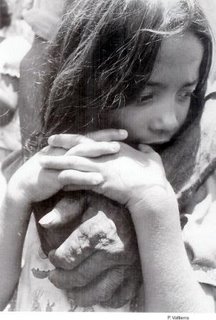
The refugees settled in
During 1989, two new townships were built-Kesté in
For their part, the 23 000 Guatemalans who did not agree to be relocated, for fear of losing their chance to return, remained in very precarious conditions in Chiapas, settled on common-farm land with the ever-present fear of being expelled, they were scattered into 123 settlements, receiving support from the World Food Program through COMAR and enjoying inevitably inferior health and education services. In 1989, it was decided to set up productive programs, in order to promote self-sufficiency by guaranteeing safe settlement. Hence, agreement was reached with the UNHCR to pass from the aid program to that of self-sufficiency for
These projects took into account the great difference from
The salaried work, also with international money –above all with international money, and, more specifically, with money from the European Community and Sweden- supported the repair of rural roads, reforestation, rehabilitation and rescue of the
The other focus is relative self-sufficiency, for same 80 days a year, which should be achieved via cottage-industry activities for self consumption: horticulture, domestic fowl, bee-keeping, rabbit and pig breeding, fish ponds-all basically located on the family lots. Given the great economic and political limitations of land in
Within the framework of the International Conference on Central American Refugees, it was announced that, in order to bring Mexican legislation up to date with new international migratory procedures, the Government would send a initiative to Congress to add, to Article 42 of the General Population Law the migratory status of refugee, as a different legal entity than that of political –asylum recipient. The reform took effect oh the 18th of July 1992, and contemplates the incorporation of the international principle of Non-returnement and Voluntary Repatriation, not expressly included among our constitutional guarantees.
Meanwhile, COMAR, in conjunction with the Secretariat of the Interior, decided to grant all the
In
In the field of education, primary education studies were certified, formally incorporating them into the National Educational System. Free text books were distributed, to make valid the International criterion that refugee children should have the same educational opportunities as the children of citizens.
In the Xth Meeting of CEAR (the Special Commission for Attention to Returnees, Refugees and Displaced) and COMAR, in which the UNCHR also took part, held in Guatemala in march 1990 to evaluate repatriations, the Government of that country announced that it “recognizes the land-holding rights of the Guatemalan refugees who were grantees of the agrarian transformation.
With the passage of time, the moment has come to bring up the matter of the refugees’ integration into
Esteban Garaiz. COMAR Associate Coordinator General, 1989-1991.
Presently Representative of the
